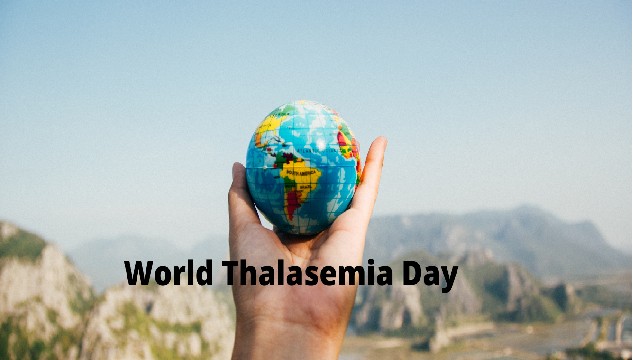WorldThalassemia Day
Organized by the World HealthOrganization, World Thalassemia Day is celebrated around the world on May 8
with a new theme. This year's theme is "Addressing Health Inequalities across
the Global Thalassemia Community". Elimination of health inequalities
from the global community of Thalassemia.
Thalassemia is a hereditary disease that is passed down from generation to generation. Children's rights
usually begin during pregnancy or after birth, but in principle children's
rights begin that’s the decent thing to do, and it should end there.
In this regard, while looking at
many aspects of parenting, it should also be noted that none of the bride and
groom suffers from Thalassemia minor, so that future generations can be protected
from deadly diseases like Thalassemia.
Thalassemia is derived
from the Greek word Thallus, which means "sea". Ameya means
"blood". The disease was first diagnosed in Greece, which is located
on the shores of the Red Sea. It is now common all over the world. Note that
areas, where Thalassemia is most common, are called Thalassemia belts. It
stretches from Greece in the west through Africa, the Middle East, Iran,
Pakistan and India to the Far East, China, and Indonesia.
Thalassemia is a
contagious disease and there is no vaccine to prevent it. It is a blood
disorder that requires frequent blood transfusions throughout the life of a
child and can lead to death if blood is not received in a timely manner.
There is no reliable data on Thalassemia
in Pakistan, but a conservative estimate is that the rate of beta Thalassemia
gene was 6% 5 years ago, but with the increase in population, the rate
continues to rise. According to an estimate, the population will reach 250
million by 2025 and the number of people infected with beta Thalassemia
will reach 15 million.
In families with beta Thalassemia,
about 15 or 17 people have Thalassemia minor. Thalassemia
is divided into two types of minor and major according to its nature. Patients
with Thalassemia
minor do not need treatment because the disease does not have any significant
effect on their lives.
However, affected people,
especially pregnant women, should use folic acid. People with the Thalassemia
minor are physically and mentally healthy. Their development and average age
are also normal. So they are not aware that there is a defect in their genes
and this ignorance becomes a threat to their children born after marriage, who
may suffer from Thalassemia major.
Thalassemia major is
actually a disease of Thalassemia because infected
children do not produce blood, so they need blood almost every 15 days or a
month. After each blood transfusion, the breakdown of red blood cells and the
release of iron from hemoglobin increases the amount of iron in the blood,
which accumulates in various organs of the body and affects their function.
Specific medications are used to
keep the amount of iron in the blood normal, which has its own side effects.
The CBC test is recommended in the first stage of diagnosing Thalassemia.
If Thalassemia
is suspected, then hemoglobin electrophoresis is performed for a final
diagnosis.
If one of the parents or both
parties has Thalassemia, the newborn should be tested 8 months after the
baby is born. To be clear, this test is repeated only once and the results
never change. In addition, this test is recommended to find out other causes of
anemia and to get a blood transfusion. If you have to have a blood transfusion
without having this test done in case of emergency, then you must do test 3
to 4 months later. There are also three types of hemoglobin. HBA, HB2, and HBF.
HbF is very high in Thalassemia major, while HbA2 is slightly higher in Thalassemia
minor.
The complete cure for Thalassemia
major is a bone marrow transplant, which is available at the National Institute
of Blood Diseases, Karachi, but not everyone can afford the most expensive
treatment, nor is it suitable for every child.
Another method of treatment
involves the use of a specific drug, which allows healthy red blood cells to
form and eliminates the need for blood transfusions, but this method of
treatment is not useful for every child. Can be beneficial for children, only a
hematologist and pediatrician can decide.
To prevent the transmission of Thalassemia
to the next generation, people with minor Thalassemia must avoid
intermarriage. Thalassemia testing must be done before marriage if two Thalassemia
minors are married to each other and become pregnant.
The CVC (chorionic villus sampling) test must
be done in the tenth week of pregnancy. If Thalassemia major is diagnosed in a
child through this test, abort the pregnancy (there is also a fatwa in this
regard) that the unborn child suffers severely throughout life.






